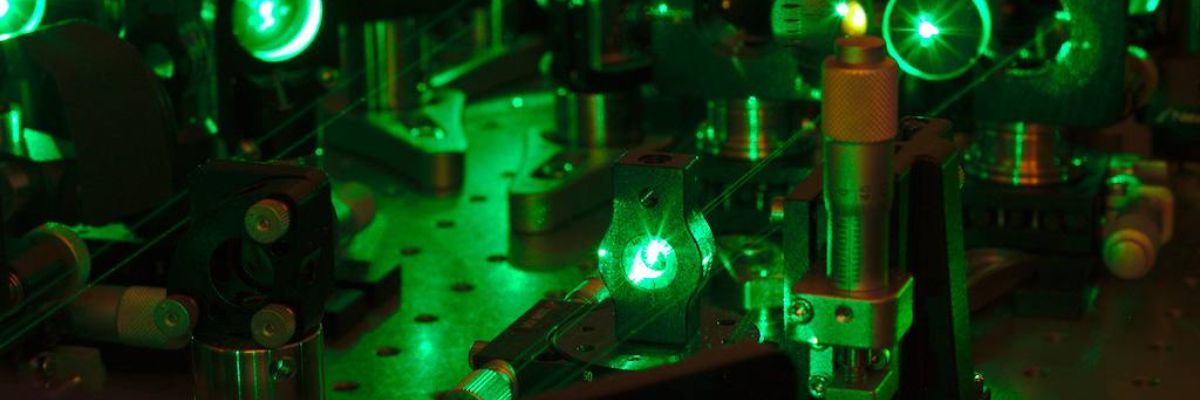
The missing information on photosynthesis is revealed by lasers
21. 05. 2018
Photosynthesis is an extremely important process, which makes it possible to convert solar radiation into chemical energy. This solves the problem of converting light into energy and, at the same time, saving it for later use. This process is used by green plants and a number of other organisms, and science has tried to fully understand it for over a hundred years. New findings are now available to scientists thanks to the development of lasers and the prestigious journal Nature Chemistry has published those results.
“While the general patterns of photosynthesis are relatively well researched, the processes at the very beginning – after the absorption of light – have long been out of reach of science,” said Karel Žídek from the Institute of Plasma Physics of the CAS and the TOPTEC Centre (Regional Centre for Special Optics and Optoelectronic Systems in Turnov). David Bína from the Biology Center of the CAS also took part in the research.
This is because the transmission of energy takes place very rapidly and it is not possible to distinguish it using common means. “For an idea – if we compare the history of the entire universe (ca 14 billion years) and the length of 1 minute, we get the same ratio as between 1 minute and tens of femtoseconds. That is the time scale our article is dealing with,” added Karel Žídek.
Only the development of lasers, which can generate very short pulses, and new experimental methods (generally called ultrafast spectroscopy) have made it possible to capture events, which hide behind the conversion of energy from the “antenna”, which absorb light to the place where the conversion to chemical energy takes place. The measurement in the laboratories of Donatas Zigmantas from Lund University in Sweden, supported by theoretical calculations, have made it possible to distinguish with much greater precision the processes taking place in photosynthesis.
The Institute of Plasma Physics of the CAS, through the TOPTEC Centre, actively collaborates with Lund University. Further experimental work, which is taking place with support of the Laser Lab Europe, is providing new results of the collaboration, which will allow further advancement in the area of ultrafast spectroscopy and spectroscopy in general.
Prepared by Vlaďka Coufalová, Department of Media Communication of the Head Office of the CAS from the background materials of The Institute of Plasma Physics of the CAS
Photo: Marcelo Alcocer (in the photograph part of the optic arrangement which was used during the measurement.)
Read also
- Three new lakes under the ice in Antarctica
- Scientists have managed to show the movement and structure of ionic hydrates
- Putovní výstava „Umění vědy“ v Jihlavě
- Letní škola astronomie v Brně
- Poprvé na světě: Protony urychlené v plazmatu vytvářeném z vodíkového ledu laserem PALS
- Praha zažije největší setkání sociologů a socioložek v evropské historii
- Finále Expedice vesmír 2015
- Nejpřesnější test základního zákona mikrosvěta – symetrie CPT
- V obecném zájmu
- Vědecká spolupráce s Korejskou republikou
The Czech Academy of Sciences (the CAS)
The mission of the CAS
The primary mission of the CAS is to conduct research in a broad spectrum of natural, technical and social sciences as well as humanities. This research aims to advance progress of scientific knowledge at the international level, considering, however, the specific needs of the Czech society and the national culture.
President of the CAS
Prof. Eva Zažímalová has started her second term of office in May 2021. She is a respected scientist, and a Professor of Plant Anatomy and Physiology.
She is also a part of GCSA of the EU.